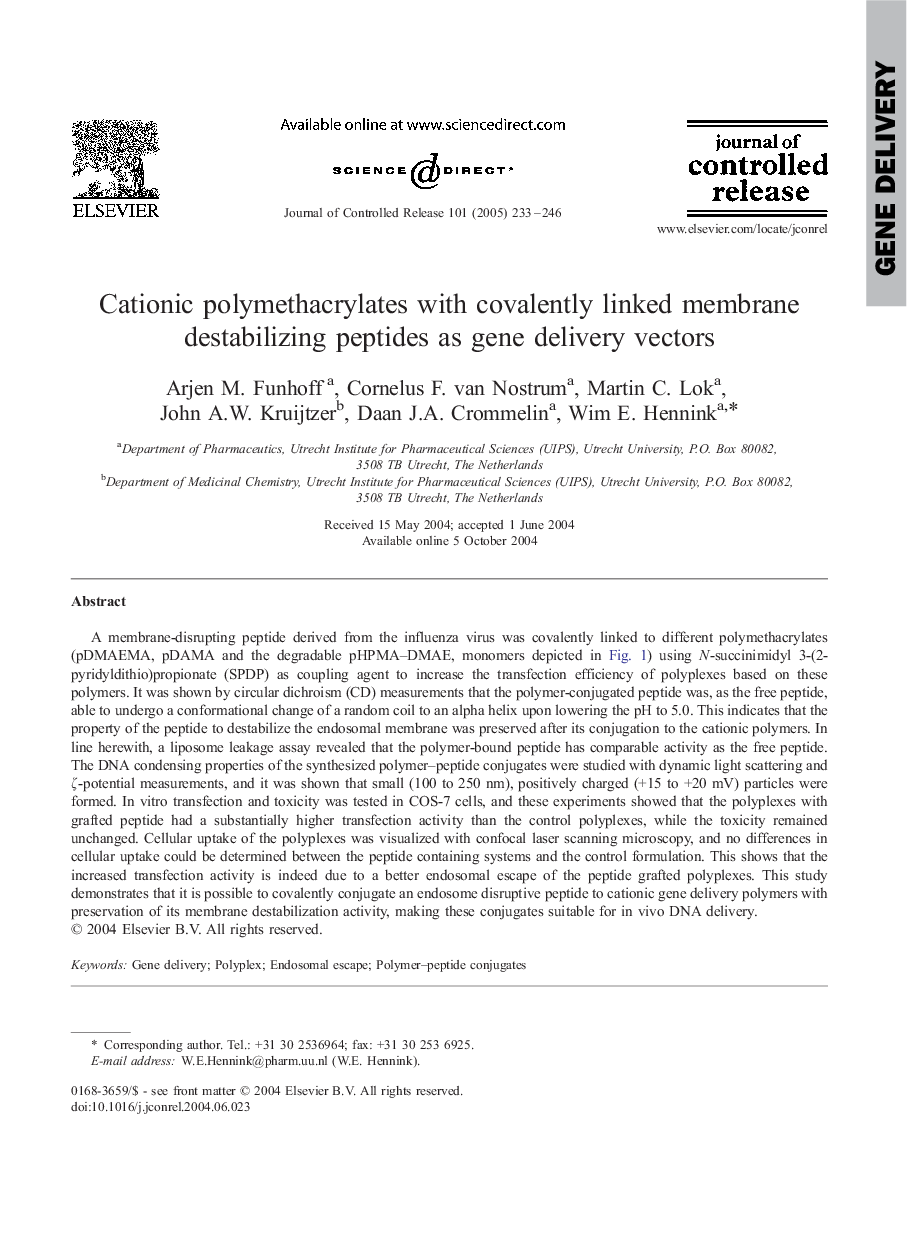| کد مقاله | کد نشریه | سال انتشار | مقاله انگلیسی | نسخه تمام متن |
|---|---|---|---|---|
| 9774709 | 1509093 | 2005 | 14 صفحه PDF | دانلود رایگان |
عنوان انگلیسی مقاله ISI
Cationic polymethacrylates with covalently linked membrane destabilizing peptides as gene delivery vectors
دانلود مقاله + سفارش ترجمه
دانلود مقاله ISI انگلیسی
رایگان برای ایرانیان
موضوعات مرتبط
مهندسی و علوم پایه
مهندسی مواد
بیومتریال
پیش نمایش صفحه اول مقاله

چکیده انگلیسی
A membrane-disrupting peptide derived from the influenza virus was covalently linked to different polymethacrylates (pDMAEMA, pDAMA and the degradable pHPMA-DMAE, monomers depicted in Fig. 1) using N-succinimidyl 3-(2-pyridyldithio)propionate (SPDP) as coupling agent to increase the transfection efficiency of polyplexes based on these polymers. It was shown by circular dichroism (CD) measurements that the polymer-conjugated peptide was, as the free peptide, able to undergo a conformational change of a random coil to an alpha helix upon lowering the pH to 5.0. This indicates that the property of the peptide to destabilize the endosomal membrane was preserved after its conjugation to the cationic polymers. In line herewith, a liposome leakage assay revealed that the polymer-bound peptide has comparable activity as the free peptide. The DNA condensing properties of the synthesized polymer-peptide conjugates were studied with dynamic light scattering and ζ-potential measurements, and it was shown that small (100 to 250 nm), positively charged (+15 to +20 mV) particles were formed. In vitro transfection and toxicity was tested in COS-7 cells, and these experiments showed that the polyplexes with grafted peptide had a substantially higher transfection activity than the control polyplexes, while the toxicity remained unchanged. Cellular uptake of the polyplexes was visualized with confocal laser scanning microscopy, and no differences in cellular uptake could be determined between the peptide containing systems and the control formulation. This shows that the increased transfection activity is indeed due to a better endosomal escape of the peptide grafted polyplexes. This study demonstrates that it is possible to covalently conjugate an endosome disruptive peptide to cationic gene delivery polymers with preservation of its membrane destabilization activity, making these conjugates suitable for in vivo DNA delivery.
ناشر
Database: Elsevier - ScienceDirect (ساینس دایرکت)
Journal: Journal of Controlled Release - Volume 101, Issues 1â3, 3 January 2005, Pages 233-246
Journal: Journal of Controlled Release - Volume 101, Issues 1â3, 3 January 2005, Pages 233-246
نویسندگان
Arjen M. Funhoff, Cornelus F. van Nostrum, Martin C. Lok, John A.W. Kruijtzer, Daan J.A. Crommelin, Wim E. Hennink,